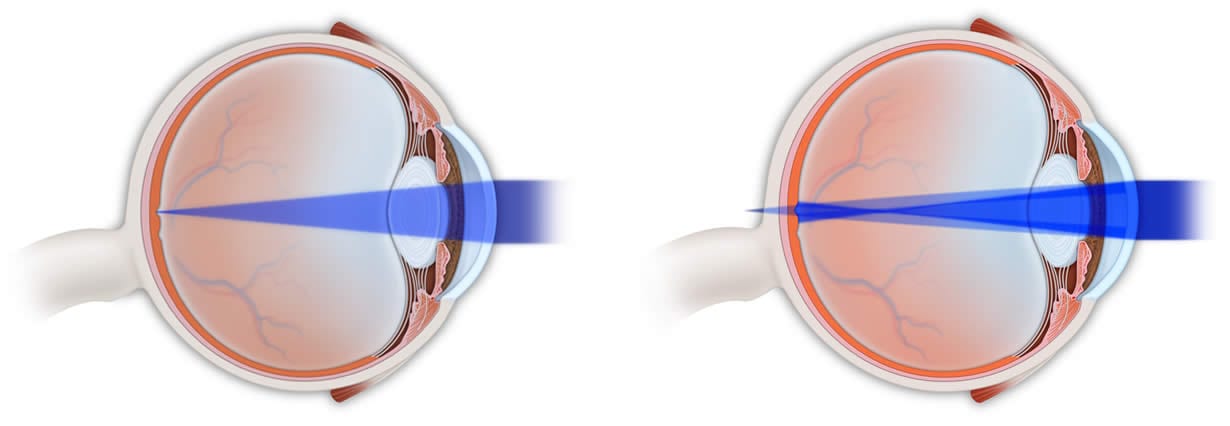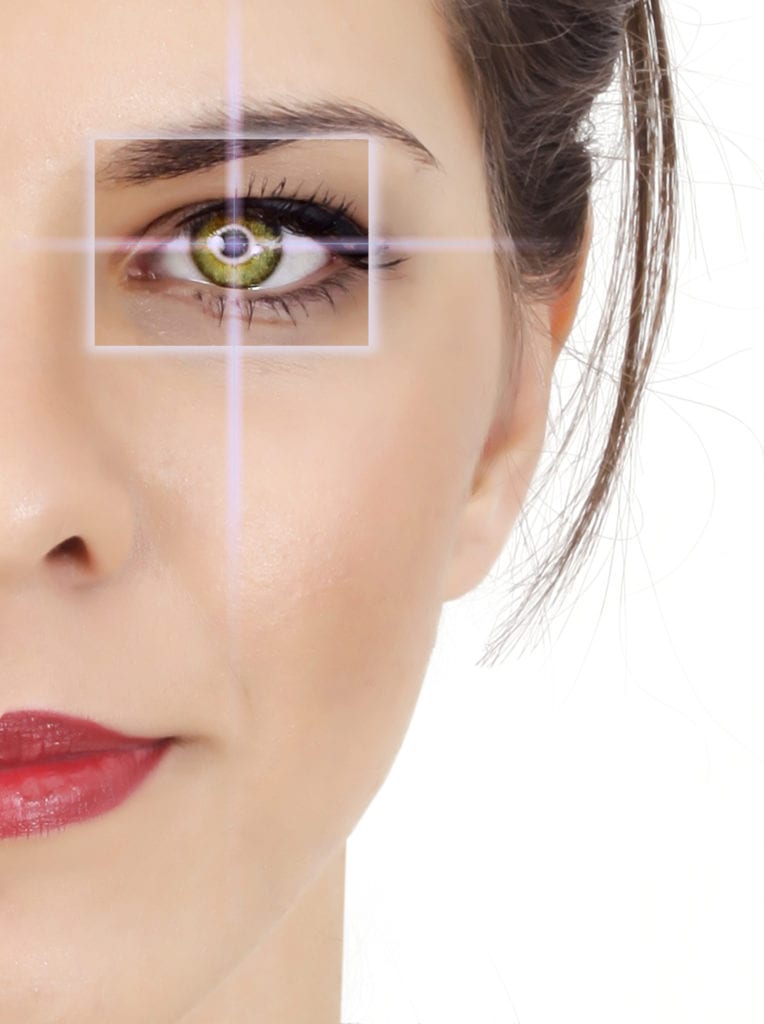Astigmatism Treatment
in Everett WA
Introduction
Astigmatism is an eye condition that affects a high percentage of the population. It results from an imperfect curvature of the eye that causes a refractive error. This means that, when light enters the eye, it is not focused evenly onto the retina. Instead, it is focused either in front of or behind the retina, often resulting in blurred vision.
There are two types of astigmatism: corneal, in which the shape of the cornea is irregular, and lenticular, in which the lens is imperfectly shaped. Corneal astigmatism is more common. Either type of astigmatism can occur in combination with nearsightedness or farsightedness. Astigmatism is frequently so mild that it does not require correction. When it does, there are several treatment options available. If you believe you have Astigmatism and are seeking treatment options, call (425) 259-2020 today to schedule a personalized consultation with one of our top eye doctors in Everett, WA!
Is astigmatism common?
Research shows that almost one-third of the population has some degree of astigmatism. In some cases, the eye can change shape over time, so that astigmatism can appear or worsen with age. Astigmatism won’t correct itself, but in many cases, it is mild enough to not merit correction through eyeglasses or contact lenses.
Causes of Astigmatism
Although the precise causes of astigmatism are unknown, heredity seems to be a factor. Astigmatism may be present at birth or it may be the result of the following:
- Length of the eye
- Eye injury
- Eye disease
- Eye surgery, often for cataracts
A rare condition is known as keratoconus, in which the cornea thins and becomes cone-shaped, can also result in severe astigmatism. This condition cannot be corrected with glasses and has to be treated by the pressure of contact lenses. In some cases, patients with keratoconus must undergo a corneal transplant.
Symptoms of Astigmatism
The severity of symptoms depends on the degree of astigmatism in the eyes, and may include the following:
- Headache
- Squinting
- Distorted or blurry vision
- Poor night vision
- Eyestrain
- Inability to focus on fine details
Depending on the nature of the patient’s irregular eye curvature, vision may be more blurred in one direction than another. Symptoms of astigmatism may improve or worsen over time.
Diagnosis of Astigmatism
The diagnosis of astigmatism is confirmed with a routine eye examination. Depending on the individual case, several of the following tests may be administered:
- Visual acuity, reading an eye chart
- Retinoscopy, on children not yet able to read
- Keratometry, to measure the curvature of the cornea
- Refraction
Refraction tests the eye with the use of a device called a phoropter, which allows the ophthalmologist to evaluate variations in the patient’s visual acuity using a variety of lenses.
Treatment of Astigmatism
Fortunately, there are several options available to treat astigmatism. The type of treatment chosen depends on the patient’s particular situation and, in some cases, personal preference. Treatments for astigmatism include both non-surgical and surgical options.
Nonsurgical Treatments
Nonsurgical treatments for astigmatism include corrective lenses of several types: eyeglasses, hard contact lenses, and soft contact lenses. Which type of lens is appropriate is decided on an individual basis.
Surgical Treatments
There are also many refractive surgical treatments for astigmatism. These include, but are not limited to the following:
- Limbal relaxing incision (LRI) surgery
- LASIK surgery
- Astigmatic keratotomy surgery (AK)
- Astigmatic-correcting cataract surgery
Candidates for refractive surgery generally have to be free from corneal scars or eye disease.
Whereas contact lenses reshape the eye only while being worn (orthokeratectomy), refractive surgery corrects astigmatism by permanently reshaping the surface of the eye. While still considered safe and effective, keratotomy surgery has recently been largely replaced by LASIK surgery.
Patients with severe astigmatism may still need to wear eyeglasses or contact lenses after astigmatic keratotomy surgery.
What are the different contact lens options for astigmatism?
Not too long ago it was thought that if you had astigmatism you could not wear soft contact lenses. That was then. Today there are many different options for correcting astigmatism with contact lenses. The main types are toric soft contact lenses, gas permeable rigid contact lenses, and hybrid contact lenses.
- Toric soft contact lenses — These soft contact lenses are made either of conventional hydrogel material or a highly breathable silicone hydrogel material. These lenses differ from typical soft contact lenses in two ways. First, they have different powers in different meridians of the lens to correct the varying amount of nearsightedness or farsightedness in different meridians of the eye that characterizes astigmatism. Second, toric lenses have a design feature that enables the lens to rotate to the proper orientation on the cornea, so the power meridians of the lens align with the appropriate meridians of the eye for clear vision.
- Gas permeable rigid contact lenses — Most gas permeable contact lenses can correct astigmatism without a toric design. This is because gas permeable lenses are rigid and retain their spherical shape on the eye, instead of conforming to the irregular shape of the cornea of an eye with astigmatism, as soft contact lenses do. Basically, the front surface of the gas permeable lens replaces the misshapen cornea as the primary refracting surface of the eye. This corrects astigmatism without the need to control the rotation of the lens with a toric design. The rigid nature of these lenses takes some getting used to, but these provide clearer vision than toric soft contacts.
- Hybrid contact lenses — These are, in effect, the best of both worlds. These lenses have a central zone made of a rigid gas permeable lens material, surrounded by a fitting zone made of typical soft contact lens hydrogel. This delivers the sharp vision of the gas permeable center and the comfort of the outer soft contact lens. Hybrid lenses are more expensive than soft lenses, but they don’t need to be replaced as frequently as soft contacts, making lens replacement costs more comparable over time.
Can astigmatism worsen over time?
Astigmatism is a lifelong condition but is easily treatable with contact lenses or eyeglasses. Astigmatism can fluctuate. It can also worsen slowly over time, but more typically it remains stable throughout the person’s life. Because it can fluctuate, however, it’s best to have regular eye checkups with the team at Physicians Eye Clinic every year or two. That way you will always have the correct prescription for the best vision.
Can astigmatism cause other eye conditions?
In children, untreated astigmatism can lead to lazy eye (amblyopia) due to the refractive errors the eye is trying to sort out. But astigmatism isn’t an eye disease, and it doesn’t pose any threat to your overall eye health. Most people are simply born with corneas that are more oval than round, and that is astigmatism.
What happens if astigmatism is left untreated?
As mentioned above, if astigmatism is left untreated in a child, it can make the brain begin to ignore the signals it’s receiving from that eye, a condition known as amblyopia. But in adults, not treating astigmatism will only cause a person to have headaches, eye strain, and blurred vision.
Some people think not wearing their glasses or contacts that correct their astigmatism will worsen their astigmatism, or that wearing them all the time will lessen the condition. This is not true; it makes no difference. Your astigmatism may worsen over time, but this has nothing to do with your diligence wearing your eyeglasses.
Can astigmatism return after surgical treatment?
The changes made to the cornea with LASIK surgery are permanent, so your astigmatism in the vast majority of cases will not return. However, it is possible for vision regression after LASIK, but this is usually not astigmatism, but near or farsightedness.
How does LASIK treatment correct astigmatism?
LASIK simply reshapes the cornea with laser energy. Since astigmatism is typically due to the person’s cornea being shaped more like a football than the round shape of a normal cornea, using LASIK to reshape the cornea to a round shape is very successful for correcting astigmatism. There are limits, however: LASIK can correct up to about 6 diopters of astigmatism.
Schedule a consultation for Astigmatism treatment in Seattle
If you’re interested in learning more about Astigmatism and the treatment options provided by our eye doctors, please contact us for a consultation at (425) 259-2020 or fill out our contact us form. We will discuss your needs and concerns, and determine your best course of action.




